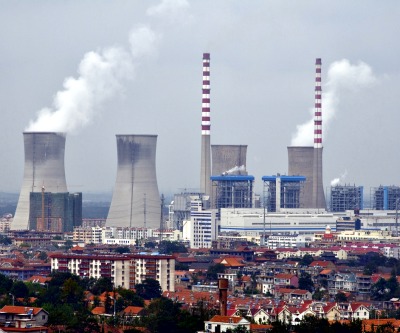
In the last 1.5 years, despite the Fukushima disaster and the temporary suspension of new nuclear reactor construction, China is pushing ahead with its highly ambitious nuclear program.
In fact, according to the World Nuclear Association (WNA) data, China even accelerated its domestic atomic energy development strategy after the Japan nuclear catastrophe.
Total installed capacity of operable, under construction, planned and proposed reactors increased from 206 GWe at the beginning of March, 2011(before Fukushima) to 223 GWe in September, 2011 (after Fukushima).
According to the national plan for nuclear power security and the nuclear power development plan (2011-20), approved by the State Council on October 24, 2012, China will resume the construction of new nuclear power plants, which were suspended immediately after the Fukushima disaster.
It seems that in the light of these factors China remains a driving factor in the global nuclear power market, significantly outpacing other countries in terms of amount of new reactors build and its installed capacity as well.
As of November 2012, China had 15 operating reactors (11.9 GWe of installed capacity), and 26 reactors were under construction (27.6 GWe), that amounts to about 42% of reactors under construction worldwide. Additionally, 51 reactors were planned (57.5 GWe) with its building due to start within three years, and many more than 100 units are proposed, which are likely to be commissioned before 2030.
China’s National Development and Reform Commission indicated the intention to raise the percentage of China’s electricity produced by nuclear power from the current 1.1% to 6% by 2020. This will require the current installed capacity of 11.9 GW to be increased to about 70-75 GW by 2020.
Such a significant growth imposes special requirements for uranium supplies.
In 2012, WNA estimated reactor – related uranium requirements in China at the level of 6,550 tU, and this volume is likely to be raised to about 16-17 ktU annually by 2020.
Current domestic uranium production capacity in China amounted to 1,500 tU per year.
In order to overcome uranium shortage, as well as to secure future fuel deliveries for its ambitious nuclear power program, Government of China, within the framework of the national “Two Resources, Two Markets” strategy, entitled the number of local state-owned and private companies to actively explore and develop uranium resources and production both at home and abroad. As an additional source of uranium supplies, China has begun large-scale direct purchases of uranium from the international market.
According to the latest IAEA/OECD report, recoverable uranium resources in China totaled 166,100 tU distributed by 13 major deposits and has a good potential for further expansion.
In addition, Chinese companies proactively buying assets and establishing new uranium exploration and production joint ventures abroad. In last decade, Chinese companies became shareholders in at least 15 uranium deposits in 6 different countries.
As a result, Chinese origin entities have gained access to non-domestic uranium resources of up to 230 ktU, excluding different options to buy shares and off-take contracts.
The recent and most remarkable international deal was CGNPC’s last year acquisition of the Husab project in Namibia, which is one of the world’s biggest uranium deposits.
A significant number of overseas uranium projects developing with participation of Chinese state-owned and private entities are at the production stage by now (Semizbai, Irkol, Azelik).
Cumulative in-situ uranium resources in China and overseas that are under control of local entities amounted to 400 ktU, confirming China became a major player in the world uranium market, already.
There is no doubt that China remains proactive in the coming years seeking potential M&A prospective uranium targets abroad.
As for domestic uranium production, six conventional uranium mines & mills and two in-situ leaching uranium facilities are now in production in China. They have a total nominal annual capacity of about 1,500 tU and produced the equal amount of uranium in 2011.
Uranium mining industry in China will likely be able to cover of up to 25% of domestic reactor-related uranium demand in the period until 2020. This means that local uranium production capacity will increase from current 1500 tU to about 4000-4500 tU by 2020.
Chinese companies hold interests at three uranium producing mines abroad by now, including two in-situ leaching uranium facilities in Kazakhstan (Irkol, Semisbai) and one open-pit mine in Niger (Azelik).
In 2011, total volume of uranium mined overseas and attributable to Chinese companies by their ownership shares in assets amounted to about 750 tU.
Based on best estimates, volume of uranium output under control of local entities outside China may increase to about 6,500 tU (low scenario) or even to 8,000 tU (high scenario) by 2020, depending on the future development of such projects like Gurvanbulag, Crocker Well and others.
The main contributor to production capacity increase at this period will be Husab project with the designed production capacity of about 5,700 tU per year. As announced by CGNPC in November 2012, Husab uranium mine and mill will begin operating by the end of 2015.
Thus, total uranium production controlled by Chinese companies at home and abroad may increase from current 2.3 ktU to about 12 ktU (high scenario) by 2020.
Based on high scenario of uranium production and reactor related uranium requirements, cumulative uranium shortage for China’s nuclear program amounted to 40-45 ktU in 2010-2020.
To cover current and future uranium deficit Chinese companies buying additional volumes of uranium on the international market to build up stocks.
For example, China imported 16,126 tU in 2011 and 17,136 tU in 2010, with only 8,000 tU in the period 2006-2009. Around 95 percent of China’s uranium imports are from Kazakhstan, Namibia, Australia and Uzbekistan.
In 2013-2020, global uranium demand of world total NPP’s requirements amounted to approximately 630 ktU.
In this period, China needs about 100 ktU for its nuclear power plant construction program.
Therefore until 2020 China will have to secure about 16% of global uranium supply to fuel its nuclear industry.